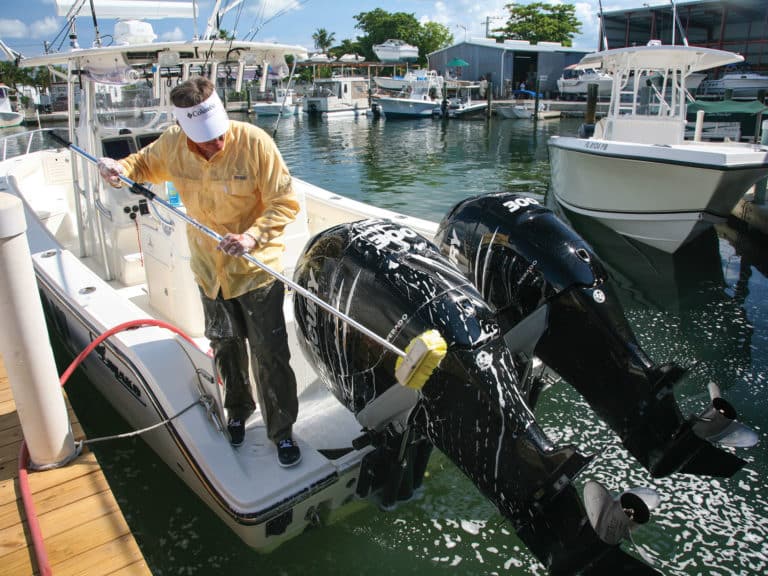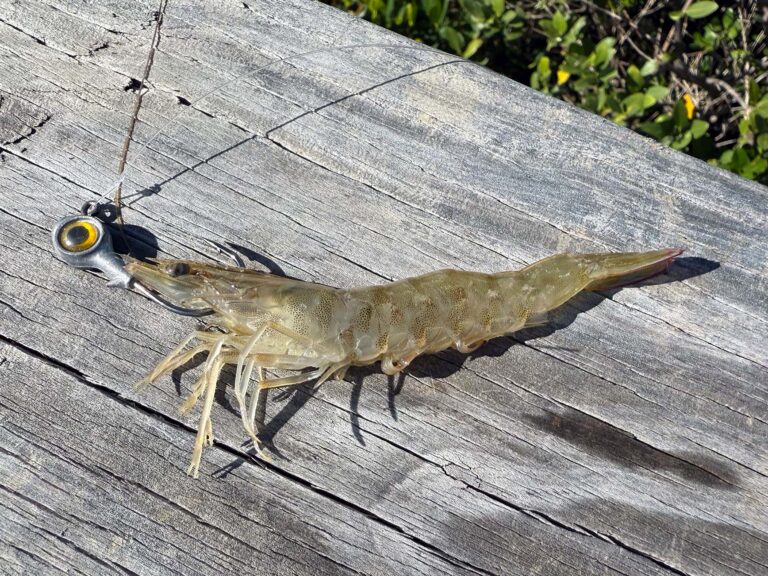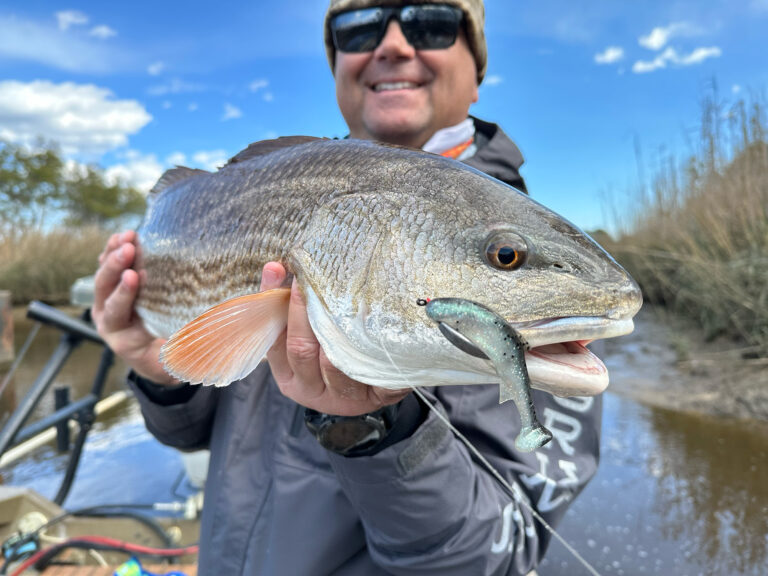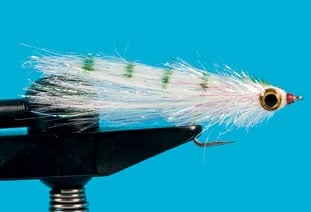
Many fly-fishers consider dock-light snook, seatrout and baby tarpon easy marks. The bite can be incredible when the current is cranking and sweeping forage into that inviting halo. A dock light creates a food chain of sorts – the marine minnows and small shrimp there are feasting on even smaller copepods and larval forms of myriad creatures. It is a world of eat until you are eaten.
The best flies are generally small and white; simple, impressionistic minnow patterns normally suffice. A fluff of white marabou or a few wisps of bucktail with a little flash can be all it takes, but dock snook can become picky, particularly on hard-hit docks, and even more so when the water is clear. They can also be rough on flies tied with delicate materials. After much research and development, I came up with a fly I call the Midnight Minnow, a durable and realistic pattern that is easy to tie.
Depending on the mood of the fish and the size of the prominent forage, I use standard-length hooks in sizes 6 or 4 for 1½- to 2-inch flies. I sometimes go as small as a No. 8 and cut the length to just over an inch when snook and trout are sipping the tiniest stuff. This can be the answer, though the smallest hooks don’t find purchase as well.
Three basic materials are all you need – white DNA Holo Fusion (a blend of DNA fibers and flash) for the wing and pearl palmering chenille and 18-inch molded dome eyes for the head. You can use similar synthetic products for the wing, but I find that DNA Holo Fusion is tough as nails and can be trimmed and tapered nicely with scissors. I also keep on hand a few versions tied with bucktail wings – the extra buoyancy allows me to fish the fly slowly at the surface when the tide is sluggish or when dead-drifting the fly through the light is the hot ticket.
To top off the fly, I normally mark it with a few olive bars. To create a more shrimplike appearance, I like to mark it heavier (which better suggests body segments) and leave off the eyes.Suitable hooks include the Tiemco TMC 811S, Gamakatsu SC 15 and Mustad 34007.
Use a loop knot when fishing this pattern, especially with bite tippets over 20-pound-test. I’ve never fished anything heavier than 30, however, because most dock snook are well under 10 pounds. Floating lines allow you to pick up quickly and make repeated presentations. Last summer, I had success with Cortland’s PE+ Crystal clear floating line, which allowed for a shorter leader (around 5 or 6 feet long overall). That helped quite a bit when I had to tuck the fly under a dock from a distance.
Materials
Hook: Tiemco 811S or similar, No. 4
Head: Pearl palmering chenille, small or medium
Thread: Red Danville, 6/0
Wing: White DNA Holo Fusion (or bucktail topped with a fine flash fiber)
Eyes: Yellow/black molded 3-D, 18-inch
Glue: Head cement and hot glue(or Goop)
Tying Instructions
| STEP 1: Wind a thread base from the hook eye to the top of the hook bend, tie in a wing of DNA Holo Fusion atop the bend and cement the tie-in wraps. |
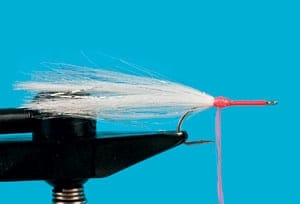
| |STEP 2: Tie in a 6-inch strand of pearl palmering chenille at the wing tie-in spot. Wind thread forward to the hook eye.|
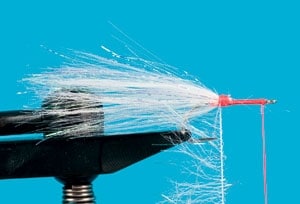
| |STEP 3: Palmer the chenille forward, using the fingers of your free hand to lay the fibers back before each turn. Tie the material off just behind the hook eye, clip the excess, wind a thread head and cement it.|
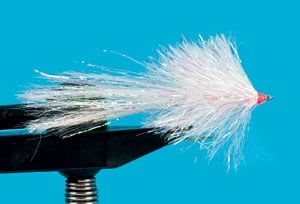
| |STEP 4: Trim the palmered head to a bullet shape with serrated scissors, allowing the long fibers at the rear to blend into the wing. Attach 3-D eyes with Goop or hot glue, and color the top of the head and make bars in the wing with an olive permanent marker.|
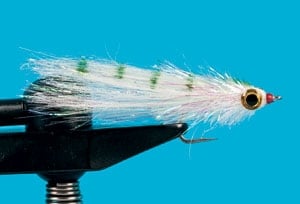
|





